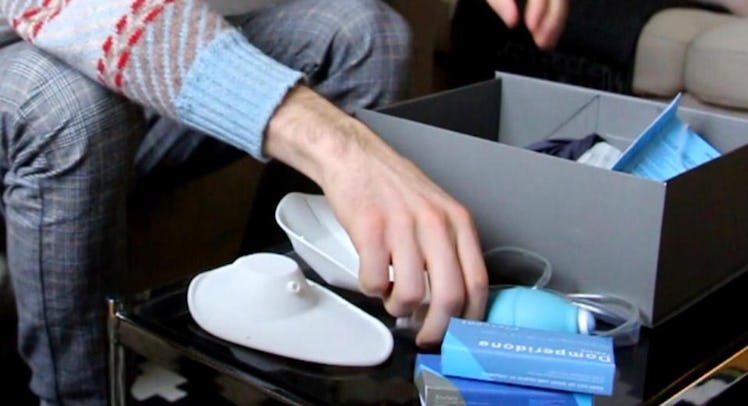Male Breastfeeding Kit Could Let Dads Nurse Their Babies
Got milk?

For most dads, breastfeeding is an experience they can only observe from the sidelines but a new product might be changing that. A British project design student is currently developing a kit that would allow men to naturally produce breast milk through a daily dose of hormones.
“After learning that common trigger of postnatal depression for mothers is the pressure to breastfeed, I developed this kit to help couples support each other, as well as their new baby,” explained Marie-Clarie Springham, the 24-year-old behind the revolutionary idea, which recently won the world’s first Meaning-Centred Design Awards in London.
She adds that she hopes it “enables dads to take a more active role in the first six months of the baby’s life and allows moms to relinquish some of the pressures and duties of parenting.” After all, studies have shown that a mother’s workload increases by 21 hours after a baby is born, compared to the dad’s increase of just 12.5 hours.
Here’s how it works: As soon as his partner becomes pregnant, the father will start taking progestin, which is a hormone that stimulates the creation of milk-producing glands, once a day. Then, six weeks before the baby is due, he will add a dose of domperidone, which signals the body to start making breast milk. This allows him to begin breastfeeding when the baby arrives.
The kit will include not only the hormones themselves but also a breastfeeding pump and what Springham refers to as “the male equivalent of the maternity bra.” It’s essentially a compression vest, which may be necessary since Springham notes that men’s breasts could swell to the size of a B-cup during the process.
While the kit is still in the early stages of development (it still needs to go through clinical testing, too), rumor has it that it could hit shelves in as little as five years. Let the countdown begin.
This article was originally published on